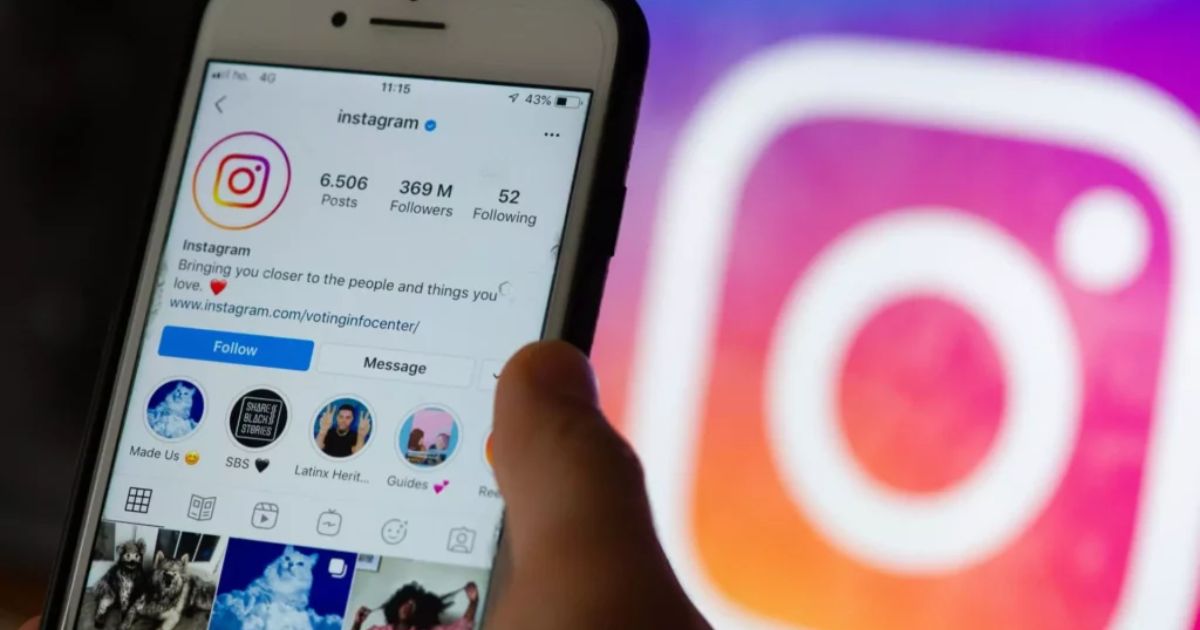In the vast realm of Instagram, a new phenomenon has emerged known as shadow tagging. Like a silent whisper in the bustling online crowd, shadow tagging offers a subtle yet powerful way to connect and engage with the Instagram community. Through this article, we will delve into the depths of shadow tagging, exploring its definition, benefits, techniques, and potential pitfalls. Join us on this enlightening journey as we unravel the secrets of shadow tagging and discover its place in the future of Instagram.
Key Takeaways
- Shadow tagging on Instagram refers to the act of tagging accounts in a post without their knowledge or consent, which is often seen as a violation of privacy and can lead to negative consequences.
- However, shadow tagging can also have benefits, such as increased exposure, community engagement, brand recognition, and the promotion of content and products.
- Effective shadow tagging techniques include strategic selection of relevant accounts and hashtags, attracting the target audience, growing Instagram presence, avoiding excessive tagging, and focusing on relevance.
- Mistakes to avoid in shadow tagging include using excessive tagging, irrelevant tagging, and not researching and analyzing relevant hashtags.
Definition of Shadow Tagging on Instagram
Although there is no universally accepted definition of shadow tagging on Instagram, it generally refers to the act of tagging accounts in a post without their knowledge or consent. This practice can be seen as a way to gain attention or increase visibility by associating oneself with popular or influential accounts.
However, shadow tagging is often viewed as a violation of privacy and can lead to negative consequences for both the tagger and the tagged accounts. It can be seen as invasive and spam-like behavior, as it floods the tagged account’s notifications with unwanted tags and potentially annoys their followers.
Additionally, it can damage relationships and trust between users on the platform. Therefore, it is important to respect others’ consent and privacy when using tags on Instagram.
Benefits of Shadow Tagging on Instagram
One potential benefit of shadow tagging on Instagram is that it can potentially increase the visibility and reach of a post, allowing it to be seen by a wider audience. This can be particularly advantageous for individuals or businesses looking to promote their content or products. Here are three reasons why shadow tagging can be beneficial:
- Increased exposure: By tagging popular accounts or relevant hashtags, a post has the potential to be featured on their tagged posts or explore page, exposing it to a larger audience.
- Community engagement: Shadow tagging can help to foster a sense of community as it allows users to connect with others who share similar interests or values, leading to increased engagement and interaction.
- Brand recognition: By strategically shadow tagging, a brand can establish itself as an authority in a particular niche, gaining recognition and trust from followers.
Overall, shadow tagging on Instagram can be a powerful tool for expanding reach, building community, and enhancing brand visibility.
Techniques for Effective Shadow Tagging on Instagram
The techniques for effective shadow tagging on Instagram involve strategic selection of relevant accounts and hashtags to maximize the visibility and engagement of one’s posts. Shadow tagging is a method used by Instagram users to increase their reach and gain exposure to a wider audience.
By tagging popular accounts and using popular hashtags, users can attract the attention of followers who are interested in similar content. This technique is particularly useful for individuals or businesses looking to grow their Instagram presence and increase their follower count.
However, it is important to note that shadow tagging should be done strategically and not excessively, as excessive tagging can be seen as spammy and may result in a negative impact on engagement. To maximize the effectiveness of shadow tagging, users should focus on selecting relevant accounts and using hashtags that align with their content and target audience.
Common Mistakes to Avoid in Shadow Tagging on Instagram
To ensure successful shadow tagging on Instagram, users must avoid the common mistakes of excessive tagging or irrelevant tagging, as these can hinder engagement and limit the effectiveness of their outreach efforts. Shadow tagging is the practice of including popular or trending hashtags in the caption or comments of a post to increase visibility and reach a wider audience.
However, using too many hashtags or using ones that are unrelated to the content can be seen as spammy and may discourage users from engaging with the post. Additionally, using generic or overused hashtags can make it difficult for your content to stand out among the sea of other posts. To avoid these common mistakes, users should:
- Research relevant hashtags that are specific to their niche or industry.
- Use a mix of popular and niche-specific hashtags to maximize reach.
- Analyze the performance of hashtags to identify which ones are driving the most engagement and adjust their strategy accordingly.
Case Studies: Successful Shadow Tagging Campaigns on Instagram
Several brands have achieved impressive results through their innovative and well-executed shadow tagging campaigns on Instagram, positioning themselves as industry leaders and increasing their brand visibility. One notable case study is Nike, who launched a shadow tagging campaign to promote their new line of running shoes.
They strategically placed their shoes in various locations, such as parks and gyms, and encouraged users to take photos of themselves with the tagged shoes. This generated a buzz on social media, with users sharing their tagged photos and using the campaign hashtag. As a result, Nike saw a significant increase in brand engagement and a boost in sales.
Another successful example is Coca-Cola, who utilized shadow tagging to promote their limited edition summer drink. By tagging locations where their product could be found, Coca-Cola created a sense of exclusivity and adventure, enticing users to seek out their product and share their experiences on Instagram. This generated a sense of belonging and excitement among consumers, ultimately increasing brand loyalty and sales.
Shadow Tagging Vs. Traditional Hashtags: Which Is Better
While both shadow tagging and traditional hashtags have their merits, the effectiveness of each strategy ultimately depends on the specific goals and target audience of the brand. Shadow tagging, the practice of including popular hashtags within the caption or comments section of a post without actually displaying them, can be advantageous in certain situations. On the other hand, traditional hashtags are widely recognized and easily searchable, making them a popular choice for increasing discoverability and reach. When deciding which approach to use, brands should consider the following:
- Brand Awareness: Shadow tagging can help to maintain a more curated and cohesive aesthetic, which may be beneficial for brands with a strong visual identity.
- Reach and Engagement: Traditional hashtags can broaden a brand’s reach and attract a wider audience, potentially resulting in increased engagement levels.
- Targeted Audience: Shadow tagging can be effective in targeting niche communities or specific interests, while traditional hashtags offer a broader reach.
Ultimately, the decision between shadow tagging and traditional hashtags should be based on the specific goals and target audience of the brand. By understanding their unique needs, brands can choose the strategy that best aligns with their objectives and maximize their impact on Instagram.
The Future of Shadow Tagging on Instagram
Amidst ongoing debates about the efficacy of shadow tagging and traditional hashtags, the future of shadow tagging on Instagram remains uncertain given the ever-evolving algorithms and user preferences. Shadow tagging refers to the practice of including popular hashtags in the caption or comments section of a post without actually showing them.
This technique is believed to bypass Instagram’s algorithm, allowing posts to reach a wider audience. However, as Instagram continues to update its algorithm and crack down on spammy practices, the effectiveness of shadow tagging may diminish. User preferences also play a significant role in shaping the future of shadow tagging.
As users become more aware of shadow tagging and the potential for manipulated engagement, they may demand more transparency and authenticity, favoring traditional hashtags over shadow tagging. Ultimately, the future of shadow tagging on Instagram depends on how the platform evolves and how users prioritize genuine connections and engagement.
Expert Tips and Strategies for Advanced Shadow Tagging on Instagram
One effective strategy for advanced shadow tagging on Instagram is to strategically select a handful of highly relevant and popular hashtags to maximize reach and engagement. By choosing hashtags that are closely related to your content and are frequently used by your target audience, you increase the chances of your posts being discovered by a wider audience. Here are three expert tips and strategies to enhance your shadow tagging on Instagram:
- Research and analyze popular hashtags in your niche to identify the ones that are most relevant to your content.
- Use a combination of broad and specific hashtags to attract a diverse range of followers while targeting a more specific audience.
- Regularly update your hashtag selection based on current trends and new hashtags that gain popularity within your niche.
Frequently Asked Questions
How Does Shadow Tagging on Instagram Differ From Traditional Hashtags?
Shadow tagging on Instagram differs from traditional hashtags by allowing users to tag their posts with hidden or unrelated tags. This practice aims to increase visibility and reach by tapping into popular or trending tags, even if they are not relevant to the content.
Are There Any Negative Consequences to Using Shadow Tagging on Instagram?
Using shadow tagging on Instagram can have negative consequences. It can lead to decreased engagement, as the content may not reach the intended audience. Additionally, it may violate Instagram’s terms of service and result in penalties or account suspension.
Can Shadow Tagging on Instagram Be Used for Personal Accounts or Is It Primarily for Businesses?
Shadow tagging on Instagram can be used for both personal accounts and businesses. It involves tagging accounts that are not directly related to the post in order to increase visibility and reach a wider audience.
Are There Any Limitations or Restrictions to the Number of Shadow Tags That Can Be Used in a Single Post on Instagram?
There are no specific limitations or restrictions on the number of shadow tags that can be used in a single post on Instagram. However, it is advisable to use them strategically to maintain a clean and organized appearance.
Can Shadow Tagging on Instagram Help Increase Engagement and Visibility for Smaller Accounts?
Shadow tagging on Instagram can potentially help increase engagement and visibility for smaller accounts. By tagging popular or relevant accounts in their posts, smaller accounts can attract the attention of a larger audience and potentially gain more followers and likes.
Conclusion
In conclusion, shadow tagging on Instagram offers a unique and effective way for brands and individuals to increase their visibility and reach on the platform. Through strategic tagging of relevant but less popular accounts, users can tap into niche communities and gain exposure to a wider audience.
While traditional hashtags still have their place, shadow tagging presents a promising alternative that can yield impressive results. As the practice continues to evolve, it is important for users to stay informed and adapt their strategies accordingly.











